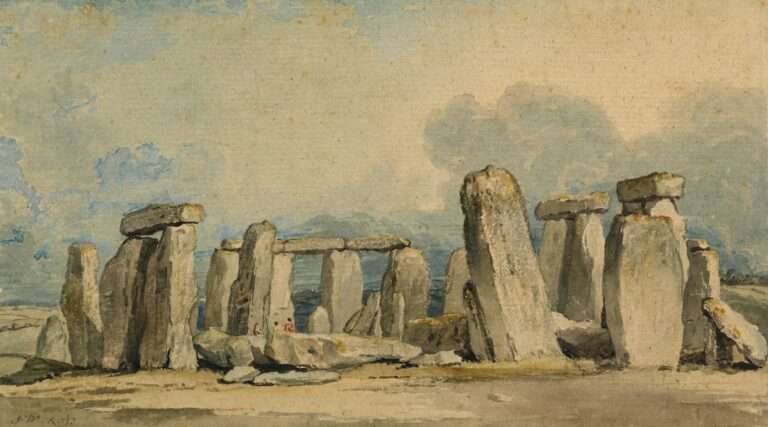Exploring the Symbolism in Western Art

Symbolism in art refers to the use of symbols, images, or objects to represent abstract ideas or concepts. It is a visual language that artists use to convey deeper meanings and evoke emotions in their work. Symbolism in Western art has a long and rich history, dating back to ancient civilizations such as the Egyptians and Greeks. However, it reached its peak during the late 19th and early 20th centuries with the Symbolist movement, which sought to express the inner world of the artist through symbolic imagery.
The Importance of Symbolism in Art
Symbolism adds depth and meaning to art by allowing artists to communicate complex ideas and emotions that may be difficult to express through realistic representation alone. It allows viewers to engage with the artwork on a deeper level, as they are encouraged to interpret the symbols and uncover their hidden meanings. Symbolism also allows artists to transcend the limitations of time and space, as symbols can be understood across different cultures and time periods.
One famous example of symbolism in art is Leonardo da Vinci’s “The Last Supper.” In this iconic painting, da Vinci uses various symbols to convey the religious significance of the scene. The placement of Jesus at the center of the composition, surrounded by his disciples, symbolizes his role as the central figure in Christianity. The use of light and shadow further enhances the symbolic meaning, with Jesus being bathed in light while Judas, who would betray him, is cast in shadow.
Understanding the Historical Context of Symbolism in Western Art
The use of symbolism in Western art is deeply rooted in the historical context of each era. Religion, mythology, and philosophy have played a significant role in shaping symbolism throughout history. In ancient civilizations such as Egypt and Greece, religious symbols were used to represent gods and goddesses, as well as concepts such as life, death, and rebirth.
During the Renaissance, artists drew inspiration from classical mythology and biblical stories to create symbolic narratives in their artwork. The use of symbols allowed them to convey moral and philosophical ideas, as well as explore the human condition. For example, Botticelli’s “The Birth of Venus” uses the symbol of the seashell to represent the birth of beauty and love from the sea.
Cultural and political events have also influenced symbolism in art. The Romantic period, for instance, was characterized by a fascination with nature and a rejection of industrialization. Artists such as Caspar David Friedrich used symbols such as mountains and ruins to convey a sense of awe and the sublime, while also commenting on the social and political climate of the time.
The Role of Mythology and Religion in Symbolism
Mythology and religion have always been rich sources of symbolism in Western art. Artists have used religious symbols to convey spiritual or moral messages, while mythological symbols have been employed to explore universal themes and archetypes.
In Christian art, for example, the cross is a powerful symbol representing sacrifice, redemption, and salvation. It is often depicted in paintings and sculptures to convey the central tenets of Christianity. Similarly, the dove is a symbol of peace and the Holy Spirit, often seen in depictions of the Annunciation or Pentecost.
Mythological symbols, on the other hand, allow artists to tap into universal themes and archetypes that transcend time and culture. For instance, the Greek myth of Prometheus, who stole fire from the gods to give to humanity, has been used as a symbol of rebellion against authority and the pursuit of knowledge. Artists such as Peter Paul Rubens have depicted Prometheus in their works to explore these themes.
Common Symbols in Western Art: Animals, Colors, and Objects
Animals, colors, and objects are commonly used symbols in Western art. They can represent specific ideas or emotions, as well as create visual metaphors that enhance the overall meaning of the artwork.
Animals often carry symbolic meanings based on their characteristics or cultural associations. For example, the lion is often used to represent strength and courage, while the dove symbolizes peace and purity. In Francisco Goya’s “The Sleep of Reason Produces Monsters,” the owl is used to symbolize ignorance and darkness, contrasting with the light of reason.
Colors also have symbolic meanings in art. Red, for instance, can represent passion, love, or danger, while blue is often associated with calmness and spirituality. In Vincent van Gogh’s “Starry Night,” the use of swirling blues and yellows creates a sense of movement and emotion, symbolizing the artist’s inner turmoil.
Objects can also carry symbolic meanings in art. For example, a skull can represent mortality and the transience of life, while a mirror can symbolize self-reflection or vanity. In Jan van Eyck’s “Arnolfini Portrait,” the convex mirror in the background reflects the couple and two other figures, symbolizing the presence of God and the viewer’s role as a witness.
The Use of Symbolism in Portraiture and Still Life

Symbolism is often used in portraiture and still life paintings to convey deeper meanings or evoke specific emotions. In portraiture, artists may use symbols to represent the sitter’s personality, social status, or inner thoughts.
For example, in Leonardo da Vinci’s “Mona Lisa,” the enigmatic smile of the sitter has been interpreted as a symbol of mystery and intrigue. The landscape in the background also carries symbolic meaning, representing the harmony between humanity and nature.
In still life paintings, objects are carefully chosen to convey symbolic messages or create visual metaphors. For instance, a wilting flower may symbolize the transience of life, while a skull can represent mortality. In Jean-Baptiste-Siméon Chardin’s “The Ray,” the dead fish symbolizes the fleeting nature of life and the inevitability of death.
Symbolism in Landscape and Nature Art
Symbolism is often used in landscape and nature paintings to convey a sense of mood or emotion, as well as explore deeper philosophical or spiritual ideas. Artists may use natural elements such as mountains, trees, or bodies of water to symbolize specific concepts or evoke certain feelings.
For example, in Caspar David Friedrich’s “Wanderer above the Sea of Fog,” the figure standing on a mountain peak symbolizes man’s contemplation of the sublime and his place in the vastness of nature. The fog below represents the unknown and the mysterious.
Similarly, in Claude Monet’s “Water Lilies” series, the water lilies floating on the surface of the pond symbolize tranquility and harmony. The use of color and brushwork further enhances the symbolic meaning, with the vibrant hues and loose brushstrokes conveying a sense of movement and emotion.
The Evolution of Symbolism in Modern Art
Symbolism in art has evolved significantly in modern and contemporary art. While traditional symbols such as religious or mythological imagery are still used, artists have also embraced new symbols and expanded the definition of what can be considered symbolic.
In modern art, artists began to experiment with abstract forms and non-representational imagery, using symbols to convey emotions or ideas rather than depicting recognizable objects. For example, Wassily Kandinsky’s abstract paintings are filled with geometric shapes and vibrant colors that symbolize different emotions and spiritual states.
Contemporary artists continue to push the boundaries of symbolism in art, using a wide range of materials and techniques to create complex and thought-provoking works. For instance, Damien Hirst’s “The Physical Impossibility of Death in the Mind of Someone Living” uses a shark preserved in formaldehyde to symbolize the fragility of life and the fear of death.
The Controversial Nature of Symbolism in Western Art
Throughout history, symbolism in Western art has often been controversial, as it can challenge established norms and beliefs. Artists who use symbols to convey political or social messages may face criticism or censorship, while religious or mythological symbols can be interpreted in different ways and spark debates.
One example of a controversial artwork is Marcel Duchamp’s “Fountain,” a urinal that he submitted as a work of art in 1917. The use of a common object as an artwork challenged traditional notions of what could be considered art, sparking debates about the role of the artist and the meaning of art.
Similarly, Andres Serrano’s photograph “Piss Christ,” which depicts a crucifix submerged in urine, sparked controversy and protests when it was exhibited in the late 1980s. The use of religious symbolism in this way was seen as sacrilegious by some, while others defended it as an expression of artistic freedom.
The Significance of Interpreting Symbolism in Western Art Today
Interpreting symbolism in Western art is important today because it allows us to gain a deeper understanding and appreciation of artworks. By uncovering the hidden meanings behind symbols, we can engage with the artwork on a more profound level and connect with the artist’s intentions.
Understanding symbolism also helps us to recognize the cultural, historical, and philosophical influences that shape art. It allows us to see how artists have used symbols to comment on social and political issues, explore universal themes, or express their inner thoughts and emotions.
Moreover, interpreting symbolism in art encourages critical thinking and fosters creativity. It invites viewers to engage with the artwork actively, forming their own interpretations and making personal connections. By exploring the symbolic language of art, we can develop a richer visual literacy and enhance our overall understanding of the world around us.
In conclusion, symbolism in Western art is a powerful tool that artists use to convey deeper meanings and evoke emotions. It adds depth and complexity to artworks, allowing viewers to engage with them on a more profound level. Symbolism in art has evolved throughout history, drawing inspiration from religion, mythology, philosophy, and cultural events. It continues to be a significant aspect of contemporary art, challenging established norms and sparking debates. By interpreting symbolism in art, we can gain a deeper understanding of its meaning and significance, enhancing our appreciation of art as a whole.
If you’re interested in exploring the symbolism behind Western art, you might also find this article on the symbolism of the moon fascinating. The moon has long been a powerful symbol in various cultures and artistic movements, representing femininity, intuition, and the subconscious mind. To delve deeper into this topic, check out SymbolismHub’s article on the symbolism of the moon. It offers a comprehensive exploration of how artists have incorporated lunar symbolism into their works throughout history.
FAQs
What is Western Art Symbolism?
Western Art Symbolism is a movement in art that emerged in the late 19th century in Europe, particularly in France, and lasted until the early 20th century. It is characterized by the use of symbols and metaphors to convey ideas and emotions, often with a mystical or spiritual dimension.
What are the key features of Western Art Symbolism?
The key features of Western Art Symbolism include the use of symbols, metaphors, and allegories to convey meaning, a focus on the inner world of the artist and the viewer, an interest in the mystical and the spiritual, and a rejection of the objective representation of reality.
Who were some of the major artists associated with Western Art Symbolism?
Some of the major artists associated with Western Art Symbolism include Gustave Moreau, Odilon Redon, Pierre Puvis de Chavannes, Fernand Khnopff, and Edvard Munch.
What were some of the major themes explored in Western Art Symbolism?
Some of the major themes explored in Western Art Symbolism include the human psyche, spirituality, death and the afterlife, the occult, and the mysteries of nature.
What was the influence of Eastern art on Western Art Symbolism?
Eastern art, particularly Japanese art, had a significant influence on Western Art Symbolism. Many Symbolist artists were drawn to the simplicity, elegance, and spirituality of Japanese art, and incorporated elements of it into their own work.
What was the legacy of Western Art Symbolism?
The legacy of Western Art Symbolism can be seen in the development of other art movements, such as Surrealism and Expressionism, as well as in the continued use of symbols and metaphors in contemporary art. It also had a significant impact on literature, particularly in the works of writers such as Charles Baudelaire and Arthur Rimbaud.





